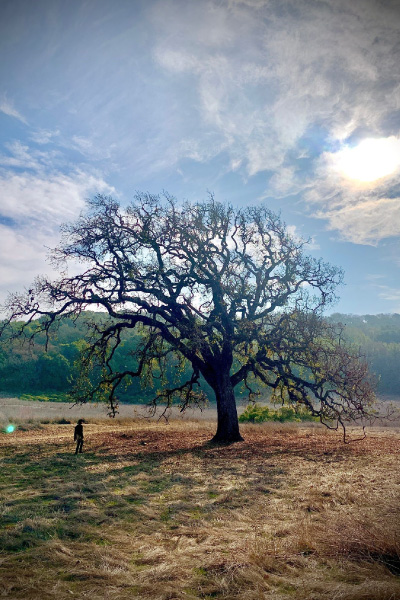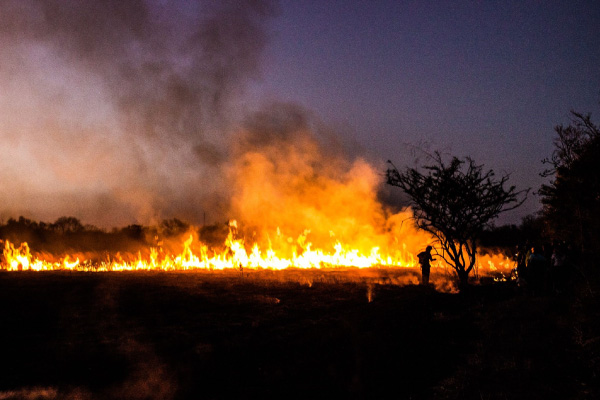 As I write this, my home in California burns. A century of fire suppression, personified by Smokey Bear’s message of caution, combined with a decade of drought conditions, has led to a predictable pyroscape in the west. This year’s largest blaze, 960,583 acres as of 9/15/21, comes in second in California history behind last year’s, at 1,032,648. In fact, nearly half of the largest fires in California’s history have occurred this year or last year. Here in Colorado, all of the top 10 largest wildfires have occurred since 2002. Oregon, Washington, Arizona, and New Mexico are experiencing a similar trend.We hear so often about the ‘new normal’ of fire season it’s easy to become desensitized or despairing. We are all now familiar with the smokey haze accompanying these huge blazes that can stretch all the way across the continent. As with all ecological issues, there are no quick fixes - the pyroscape isn’t going away any time soon. With increasingly frequent fire bans, and much discussion around how YOU can prevent wildfires, fire generates fear for its destructive nature. And yet, the West needs fire. All terrestrial ecosystems do, in some context - it’s a natural part of a healthy ecosystem, clearing space for new growth and returning carbon and other nutrients to the soil. When fire is denied its natural course, dead wood and scrubby undergrowth build up in the forest, choking out saplings and accumulating fuel for larger, hotter fires. Many species of plants are fire-adapted, so that when a fire comes through their roots remain alive underground and they regrow stronger and healthier the next year. Several species of trees, including redwoods and lodgepole pines, have serotinous cones, which only open in the heat of a fire.
As I write this, my home in California burns. A century of fire suppression, personified by Smokey Bear’s message of caution, combined with a decade of drought conditions, has led to a predictable pyroscape in the west. This year’s largest blaze, 960,583 acres as of 9/15/21, comes in second in California history behind last year’s, at 1,032,648. In fact, nearly half of the largest fires in California’s history have occurred this year or last year. Here in Colorado, all of the top 10 largest wildfires have occurred since 2002. Oregon, Washington, Arizona, and New Mexico are experiencing a similar trend.We hear so often about the ‘new normal’ of fire season it’s easy to become desensitized or despairing. We are all now familiar with the smokey haze accompanying these huge blazes that can stretch all the way across the continent. As with all ecological issues, there are no quick fixes - the pyroscape isn’t going away any time soon. With increasingly frequent fire bans, and much discussion around how YOU can prevent wildfires, fire generates fear for its destructive nature. And yet, the West needs fire. All terrestrial ecosystems do, in some context - it’s a natural part of a healthy ecosystem, clearing space for new growth and returning carbon and other nutrients to the soil. When fire is denied its natural course, dead wood and scrubby undergrowth build up in the forest, choking out saplings and accumulating fuel for larger, hotter fires. Many species of plants are fire-adapted, so that when a fire comes through their roots remain alive underground and they regrow stronger and healthier the next year. Several species of trees, including redwoods and lodgepole pines, have serotinous cones, which only open in the heat of a fire.
The indigenous nations of North America knew deeply the nourishing nature of fire. For centuries, indigenous nations from the Yurok of California to the Blackfoot of the great Plains have practiced cultural burning in ceremony and tending of the land. Traditional Ecological Knowledge holds a deep understanding of how fire is essential to the health of the landscape. Before 1800, indigenous tribes practiced cultural burning freely, treating several million acres annually in California alone. However, by the early 1900s indigenous fire practice had been banned by the US government, and members of tribes were persecuted for maintaining their relationship with fire. In their place, the US Forest Service prided themselves on a policy of swiftly dousing any fire that sparked up. The result has been decades of buildup of burnable fuels in forests cluttered with dead wood and straggly brush, entire forest ecosystems shifting as fast-growing vegetation crowds out the slower, more fire-adapted species. Nowadays, when a fire does break out, it burns much hotter and faster, causing root damage and escaping human management. Fewer acres burn per year than when the land was under indigenous management, but the fires are wilder and more destructive. In recent years, the USFS has implemented shifts in fire management toward use of controlled burns and regular forest cleanups. However, centuries of suppressing fire have had their impact, and restoring fire to the landscape must be a delicate and reverential undertaking. Many indigenous tribes, including the Karuk and Yurok of California, are leading a campaign to reinstate indigenous cultural burning as a prescription for a land where fire is out of balance. These peoples have centuries of stories, science, and relationship with the ecosystems they are part of - their understanding is deep and profound, as is their respect for fire as a tool to tend the land. We of settler descent are relative newcomers, and have much to learn about deep place-based ecological knowledge. To find a way forward, we must look to the past, and restore relationships that have been ruptured through fear and misunderstanding. Perhaps, like our conifer kin, we can find our way to serontiny, and sprout new systems from the ashes of the old.
In recent years, the USFS has implemented shifts in fire management toward use of controlled burns and regular forest cleanups. However, centuries of suppressing fire have had their impact, and restoring fire to the landscape must be a delicate and reverential undertaking. Many indigenous tribes, including the Karuk and Yurok of California, are leading a campaign to reinstate indigenous cultural burning as a prescription for a land where fire is out of balance. These peoples have centuries of stories, science, and relationship with the ecosystems they are part of - their understanding is deep and profound, as is their respect for fire as a tool to tend the land. We of settler descent are relative newcomers, and have much to learn about deep place-based ecological knowledge. To find a way forward, we must look to the past, and restore relationships that have been ruptured through fear and misunderstanding. Perhaps, like our conifer kin, we can find our way to serontiny, and sprout new systems from the ashes of the old.
Sources:
https://www.ecologyandsociety.org/vol25/iss4/art11/
https://www.fire.ca.gov/media/4jandlhh/top20_acres.pdf
https://www.msn.com/en-us/weather/topstories/largest-fires-on-record-in-colorado-history/ar-BB17Ynwt
https://www.nature.org/en-us/magazine/magazine-articles/indigenous-controlled-burns-california/
Lindsay Gilkerson works as the Backcountry Interpretive Guide for the Walking Mountains Science Center. She is a California native and a committed student of old ways, deep ecology, and everything serotinous and resilient.









